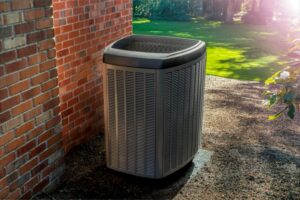The History and Evolution of Generators in Franklin, TN
Power generators have become deeply important and even life-saving devices that homeowners, workers, and organizations of all kinds — in Franklin, TN and elsewhere — have relied upon to juice up their facilities when facing unforeseen and difficult circumstances. Let’s take a look at the history and evolution of generators.
Early Breakthroughs
A full chronicle of the developments, both theoretical and practical, that eventually made it possible for generators to exist would feature hundreds of scientists. Engineers and inventors who made countless contributions to their fields were part of this development.
The first such important development came in 1729 when the English astronomer Stephen Gray showed that electricity flows by conduction. In 1800, the Italian physicist and chemist Alessandro Volta — for whom the volt was later named — invented the first electric battery by stacking an alternating pile of metal discs and pieces of brine-soaked cloth and then passing an electric current through the whole tower. Then, 20 years later, the Danish physicist Hans Christian Ørsted discovered that electric currents generate magnetic fields, thus pioneering the discipline of electromagnetism.
Another major theoretical discovery that set the groundwork for the eventual creation of generators was Faraday’s Law. Discovered by physicist Michael Faraday in 1831 (and independently by physicist Joseph Henry a year later), it’s the principle that the electric potential of a circuit is equal to the negative of the rate of change of that circuit’s magnetic flux per unit of time. Since magnetic flux is the total measure of a magnetic field, this principle precisely connects electricity with magnetism.
In addition to these developments in electromagnetism, parallel advancements were occurring in the design of engines. In the mid-1760s, James Watt, who lent his name to the watt, began experimenting with the existing steam engines and found that those models wasted energy. By 1769, he had patented a new design; he spent the next 12 years refining it and further improving its efficiency.
Alternating Current and Direct Current
In 1832, Hippolyte Pixii used Faraday’s law to build the first dynamo electric generator. Since this device sent out pulses of electricity that were not separated by current, Pixii accidentally discovered alternating current. This would prove extremely important for the later development of generators.
Pixii originally did not see the importance of his discovery, and for a long time, engineers sought to build generators that used only direct current. Direct current is current that is always of constant voltage and always flows in the same direction; alternating current is current whose voltage and direction periodically change.
Throughout the 1860s and 1870s, a series of inventors — including Antonio Pacinotti, Werner von Siemens, Charles F. Brush, and Thomas Edison — did important work to advance generator and electrification technology. Finally, in 1884, Nikola Tesla arrived in the United States and began working for Edison’s company. Edison favored the use of direct current to power the world, while Tesla championed alternating current, and the two men would feud bitterly over the matter.
However, around the 1890s, George Westinghouse would purchase many of Tesla’s patents and develop his ideas further, finally exhibiting the power of AC at the 1893 World’s Fair in Chicago. As a result, all-electric generators now use alternating current.
Generators and Power Today
By the late 19th and early 20th centuries, the parallel advances in electrification and engine design described above would start to merge. Coal-fired steam generators would create power for engines with DC dynamos, and the dynamo’s efficiency would improve as the world moved over to AC. Thanks to the work of companies like General Electric, turbines would grow larger and more powerful until it became possible to build up the power grid that we all rely on today.
At long last, by the late 1980s, all this technology had become powerful enough and portable enough to make it possible to sell home power generators directly to consumers. As a result, residences and commercial properties of all kinds have grown to use a variety of different generator models. Now generators can power everything from home HVAC systems to life support systems in hospitals.
Our team of experts is available to assist with your electrical, plumbing and HVAC system. If you want to take advantage of the power of home generators to improve your comfort in Franklin, TN, call Kimbro Air today.
Image provided by iStock
You May Also Like

5 Reasons to Upgrade Your Commercial HVAC System in Nashville, TN
If your Nashville, TN, commercial HVAC system is nearing the end of its lifespan and costing you more in repairs, it might… Continue Reading 5 Reasons to Upgrade Your Commercial HVAC System in Nashville, TN…

Do You Need IAQ Solutions in Gallatin, TN?
Indoor air quality (IAQ) is one of the most important aspects of home comfort in Gallatin, TN. While improving IAQ can always… Continue Reading Do You Need IAQ Solutions in Gallatin, TN?…

3 Causes of a Frozen Heat Pump in Hendersonville, TN
The winter chill in Hendersonville, TN presents enough problems on its own without freezing your heat pump. But if your system does… Continue Reading 3 Causes of a Frozen Heat Pump in Hendersonville, TN…
